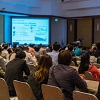By Joining you agree to MachPrinciple's Terms and Conditions and Privacy Policy
Click to Login
Please check your email. A registration confirmation link will be sent to your mailbox..
A registration confirmation link has been sent to your email. Please check your email and finish the registration process.

Search a Conference through our dedicated search page

Magnetic fields play vital roles on all scales throughout the Universe: allowing the creation of stars and exoplanets, affecting the gas flows in the interstellar medium, forming galactic and AGN jet structures, and permeating the cosmic web such as galaxy clusters. Yet the origin of these cosmic magnets and the mechanisms of field amplification/ordering over the history of the Universe are still largely unsolved. “Cosmic Magnetism” is recognized as one of the key science topics for largest radio facilities such as the Low-Frequency Array (LOFAR), the Karl G. Jansky Very Large Array (VLA), and Atacama Large Milimeter/submilimeter Array (ALMA), as well as the SKA and its precursors, Murchison Widefield Array (MWA), Hydrogen Epoch of Reionization Array (HERA), the Australian SKA Pathfinder (ASKAP), and MeerKAT. We are now entering the era of largest facilities, which are expected to uniquely solve many outstanding questions in cosmic magnetism. Theoretical and numerical predictions will become much more important in this era. One of the breakthroughs given by such modern radio telescopes is wide bandwidth in frequency. It improves, for example, the sensitivity, the spectral index estimation, and depolarization analysis. Moreover, it brings us an innovative data analysis method called Faraday tomography. Here, wide frequency coverage means “big data” challenge; a computational cost is another issue, and it should be resolved by the time when the future largest projects run. Part of the organizers, the Japan SKA Consortium (SKA-JP) Cosmic Magnetism Science Working Group, has addressed the capability of Faraday tomography (see, http://arxiv.org/abs/1603.01974, https://arxiv.org/abs/1709.02072). The organizers recently had an opportunity to make a collaboration between the SKA-JP and the Netherlands group, and share the same minds to the problems described above. We hold here the workshop to review the current status and future prospects of Faraday tomography, combining astronomical observations, numerical simulations, and astrophysical theories. We also pay a special attention to a new astronomical messenger, fast radio burst (FRB). The organizers intend to host an interactive and friendly workshop rather than a formal conference. Therefore, instructive lectures from senior researchers and interim reports from young scientists are both welcomed. During the meeting, young peoples are strongly encouraged to collaborate with senior researchers and/or young researchers from different disciplines. We hold tutorials of polarization analysis using AIPS and of Faraday Tomography. The aim of these tutorials is to educate young researchers for the progress of future radio astronomy and to popularize the concept of Faraday Tomography. We welcome participation to these tutorials of senior researchers who would like to study as well as young researchers.
